England - September 2018 - Blenheim Palace
|
|
Blenheim Palace is one of those places that you read about, you know it is a must see, but you don't really know what it is until you actually go there and see it. I had known almost nothing about it, other it was somehow connected with Winston Churchill and the Duke of Marlborough, whoever that was.
I can best describe Blenheim Palace as a British Versailles on a smaller scale. Although the palace is not nearly as big, the 2,000 acre estate grounds may be larger.
Here is Lynnette in front of the main entrance.
|
| |
 |
|
|
OK, here is the story.
His name was John Churchill. He was born in 1650, in Ashe, Devon -- just south of Dartmoor National Park. From a gentry family, he served first as a page at the court of the House of Stuart under James, Duke of York, through the 1670s and early 1680s, became a soldier, and earned military and political advancement through his courage and diplomatic skill. His descendant the great Sir Winston Churchill wrote a biography on him. John Churchill was created Earl of Marlborough on 9 April 1689. Eventually, after some bumps in the road -- he spent five weeks in the Tower of London in 1692 -- he became the de facto leader of Allied forces during the War of the Spanish Succession (1701-1714). He was created Duke of Marlborough in 1702 by Queen Anne. His subsequent victories on the fields of Blenheim (1704), Ramillies (1706), Oudenarde (1708), and Malplaquet (1709), ensured his place in history as one of Europe's great generals. Although in the end he could not compel total capitulation from his enemies, his victories allowed Britain to rise from a minor to a major power, ensuring the country's growing prosperity throughout the 18th century.
To military historians David Chandler and Richard Holmes, Marlborough is the greatest British commander in history, an assessment that is shared by others, including the Duke of Wellington who could "conceive nothing greater than Marlborough at the head of an English army".
Marlborough was ruthlessly ambitious, relentless in the pursuit of wealth, power and social advancement, earning him a reputation for avarice and miserliness. These traits may have been exaggerated for the purposes of party faction but, notes Trevelyan, nearly all other statesmen of the day were engaged in founding families and amassing estates at the public expense; Marlborough only differed in that he gave the public much more value for their money.
A picture of the main entrance from further away.
|
| |
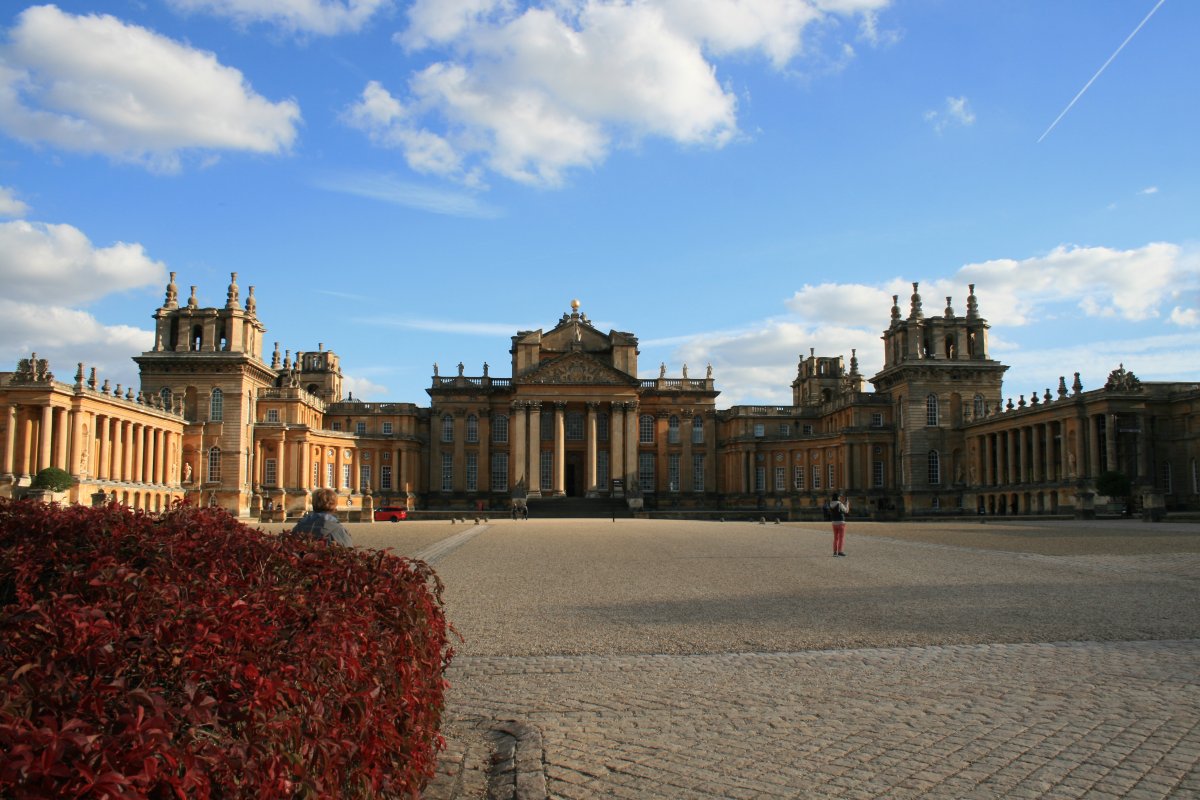 |
|
|
Blenheim -- actually called Blindheim -- is a little town on the north side of the Danube River in modern day southern Germany, about 30 miles north of Augsburg.
On August 13, 1704, Marlborough delivered a crushing defeat on France's Marshal Tallard's and the Elector of Bavaria's army at the Battle of Blenheim. The whole campaign, which historian John Lynn describes as one of the greatest examples of marching and fighting before Napoleon, had been a model of planning, logistics, tactical and operational skill, the successful outcome of which had altered the course of the conflict – Bavaria was knocked out of the war, and Louis XIV's hopes of an early victory were destroyed. Rick Steves: Some historians claim that if not for his victory, we'd all be speaking French today!
The Queen lavished upon her favourite the royal manor of Woodstock and the promise of a fine palace commemorative of his great victory at Blenheim. The rent or petit serjeanty due to the Crown for the land was set at the peppercorn rent or quit-rent of one copy of the French royal flag to be tendered to the Monarch annually on the anniversary of the Battle of Blenheim. This flag is now displayed by the Monarch on a 17th-century French writing table in Windsor Castle.
The estate given by the nation to Marlborough for the new palace was the manor of Woodstock, sometimes called the Palace of Woodstock, which had been a royal demesne, in reality little more than a deer park. Before she was queen, Elizabeth I was actually imprisoned here in a gatehouse for a short while in 1554/55. Before she was queen, Elizabeth I was actually imprisoned here for a short while in 1554.
The precise responsibility for the funding of the new palace has always been a debatable subject, unresolved to this day. That a grateful nation led by Queen Anne wished and intended to give their national hero a suitable home is beyond doubt, but the exact size and nature of that house is questionable.
Begun in 1705, it was plagued by financial troubles. The Duchess resentfully called it a "pile of stones".
Following the Duke's death in 1722, completion of the palace and its park became the Duchess's driving ambition. The final date of completion is not known, but as late as 1735 the Duchess was haggling with Rysbrack over the cost of Queen Anne's statue placed in the library. In 1732 the Duchess wrote "The Chappel is finish'd and more than half the Tomb there ready to set up"
Designed in the rare, and short-lived, English Baroque style, architectural appreciation of the palace is as divided today as it was in the 1720s. It is unique in its combined use as a family home, mausoleum and national monument. The palace is notable as the birthplace and ancestral home of Sir Winston Churchill.
Following the palace's completion, it became the home of the Churchill (later Spencer-Churchill) family for the next 300 years, and various members of the family have wrought changes to the interiors, park and gardens. At the end of the 19th century, the palace was saved from ruin by funds gained from the 9th Duke of Marlborough's marriage to American railroad heiress, Consuelo Vanderbilt.
The palace remains the home of the Dukes of Marlborough, the present incumbent of the title being Charles James (Jamie) Spencer-Churchill, 12th Duke of Marlborough. To this day, the Marlboroughs still annually tender a copy of the French royal flag to the Monarch on the anniversary of the Battle of Blenheim as rent for the land that Blenheim Palace stands on.
|
| |
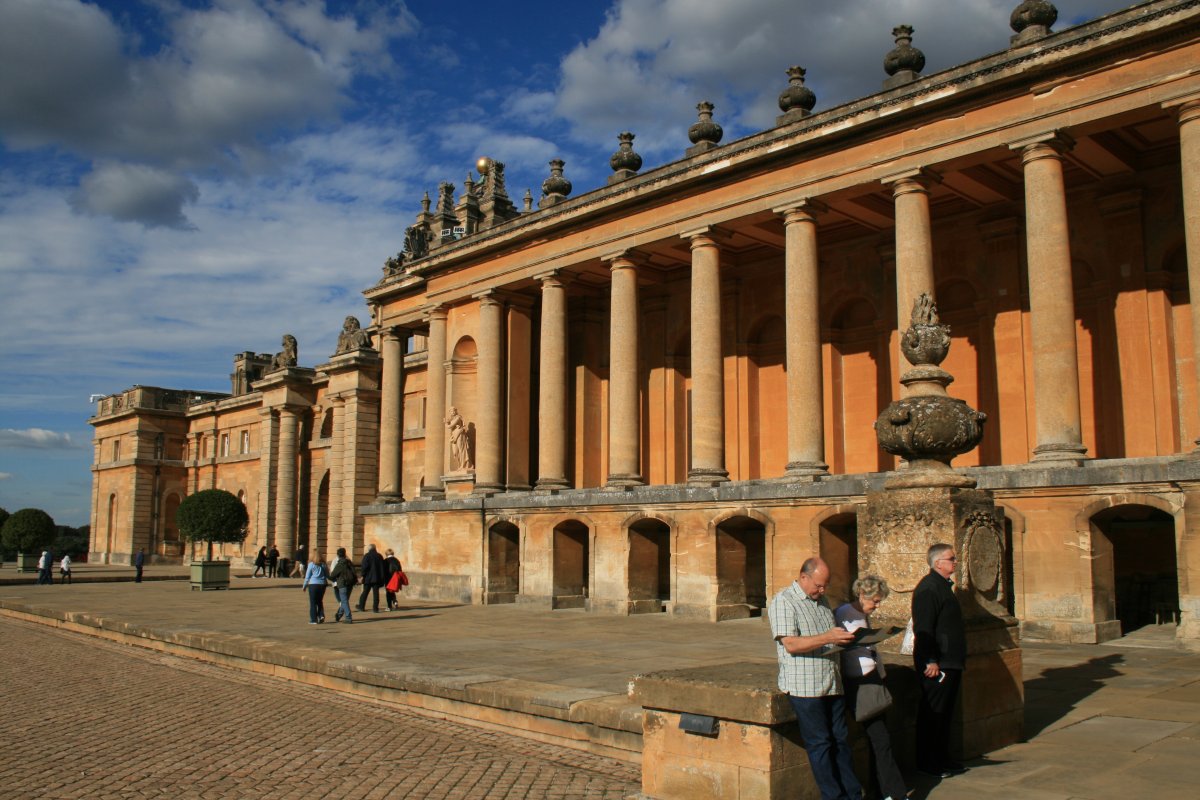 |
|
|
The Duke of Marlborough.
I must say, despite the Duke's impressive accomplishments in an era where being a politician, general, and diplomat was every bit as complex and demanding as today, with higher stakes for failure, it is just hard to take him seriously with that wig and those clothes!
|
| |
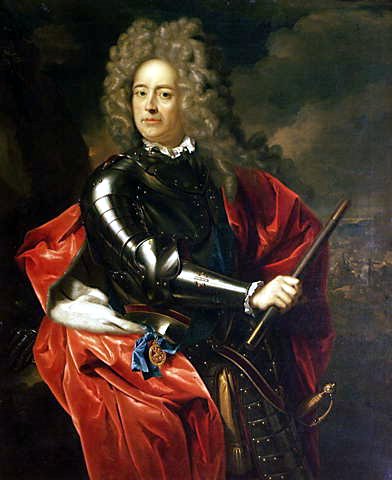 |
|
|
The old and the new. I wonder if this Range Rover is the 12th Duke's ride?
|
| |
 |
|
| Stepping inside the main entrance into the Great Hall. |
| |
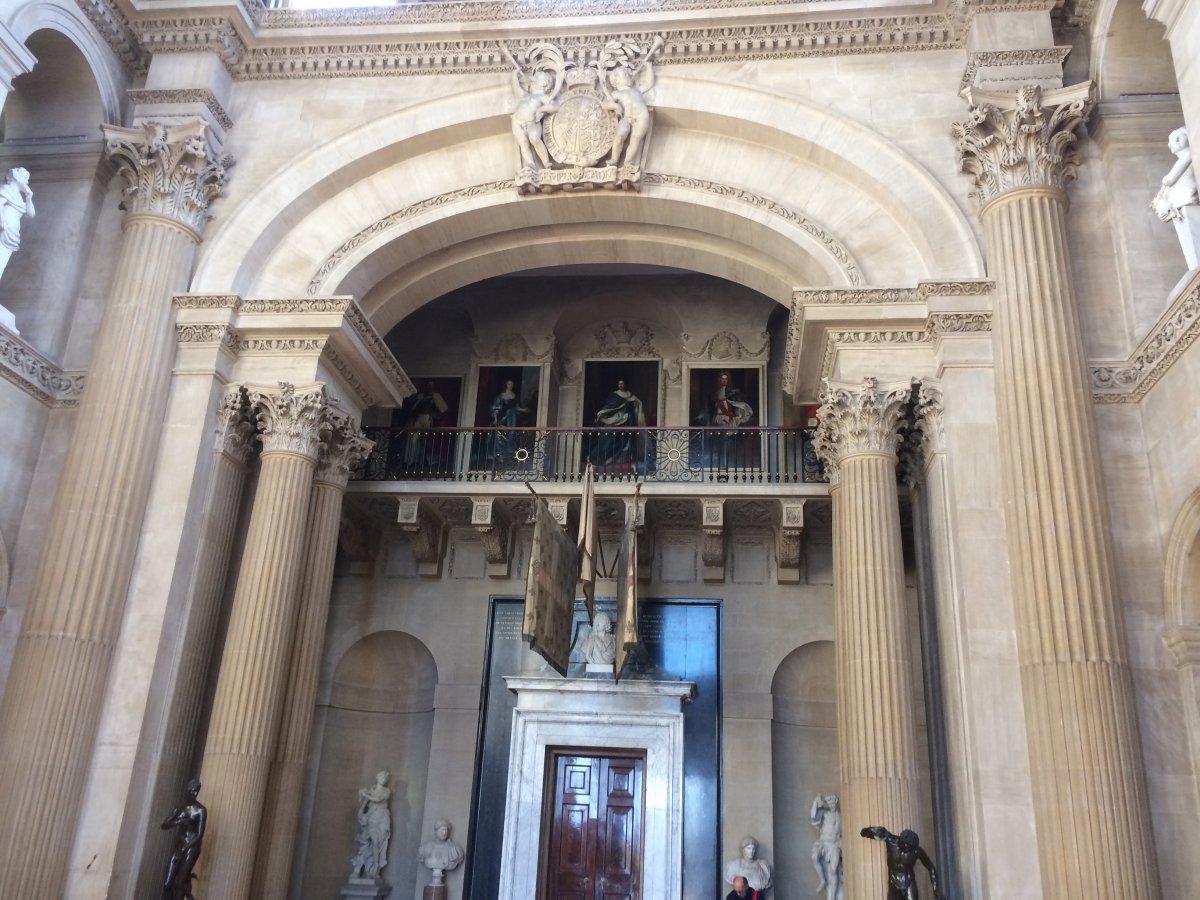 |
|
| Looking up at the ceiling. |
| |
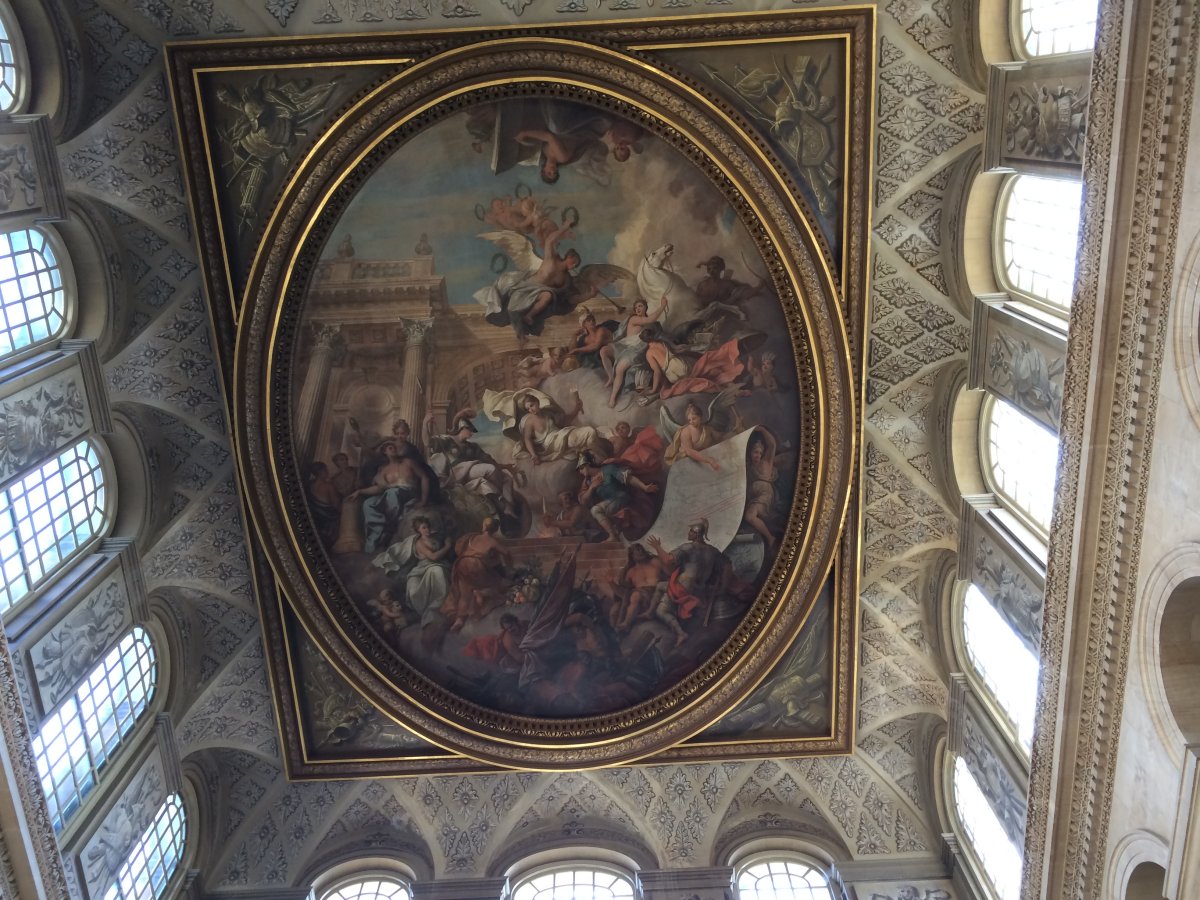 |
|
| A Roman sculpture of Alexander the Great, excavated from the Herculaneum ruins, looks out over the Great Hall. |
| |
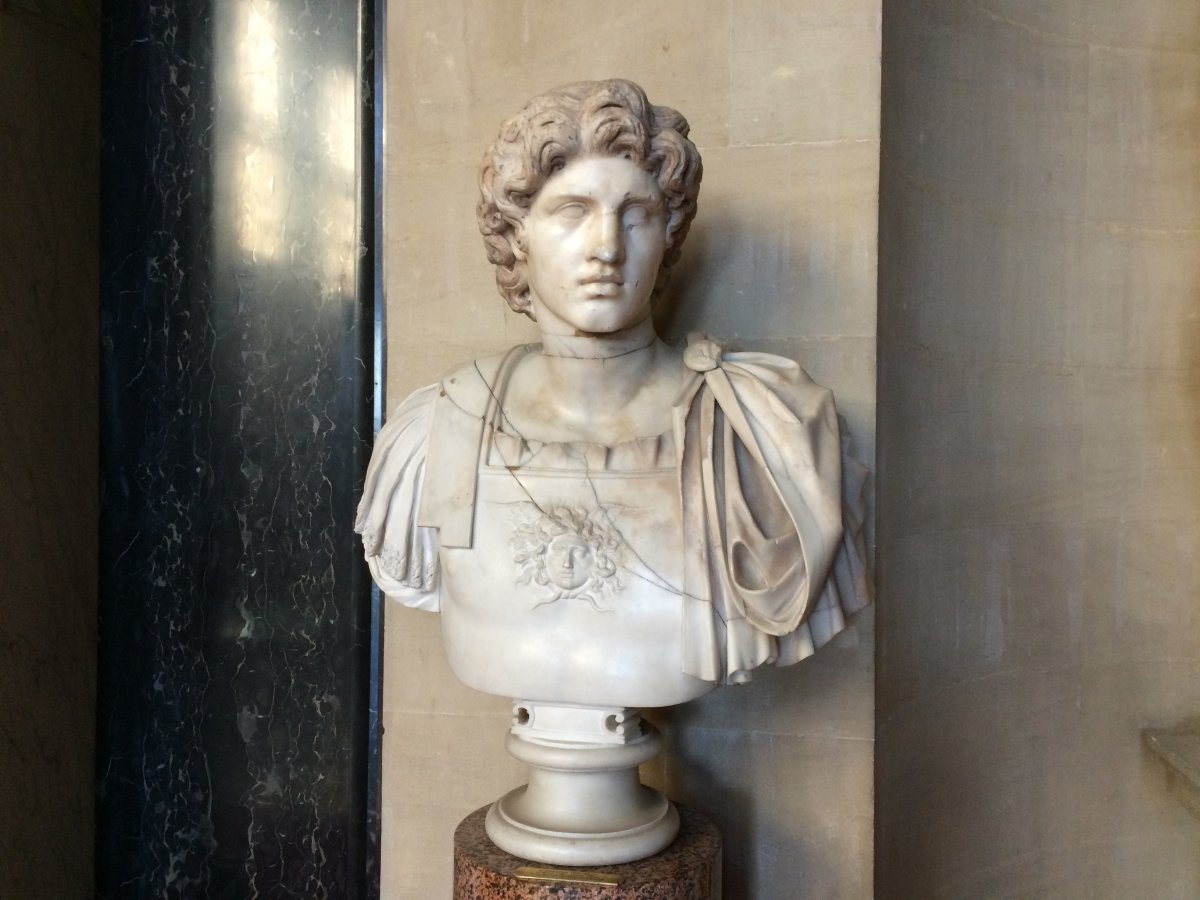 |
|
|
The Roman emperor Hadrian.
|
| |
 |
|
| After the Great Hall, we walked through the "State Rooms", a series of ornate rooms with lots of paintings and tapestries on the wall. Most of them featured the Duke of Marlborough. |
| |
 |
|
|
And then we saw this painting on upper left. What is this? Don't laugh. It probably is worth millions of dollars.
|
| |
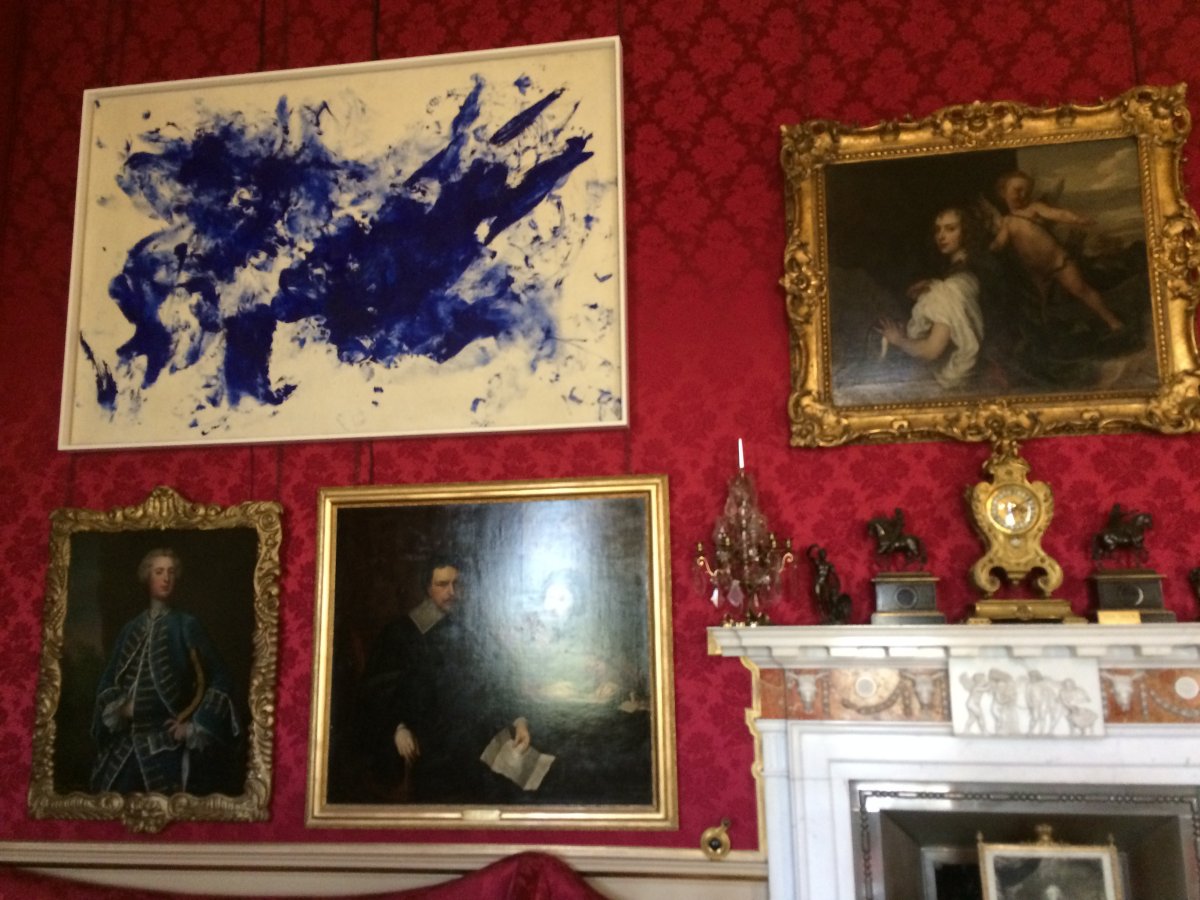 |
|
|
This big tapestry is one of a series of ten "Brussels" tapestries celebrating the military victories of the Duke of Marlborough.
Notice more of the blue art at bottom. It turns out they are the art of Yves Klein.
|
| |
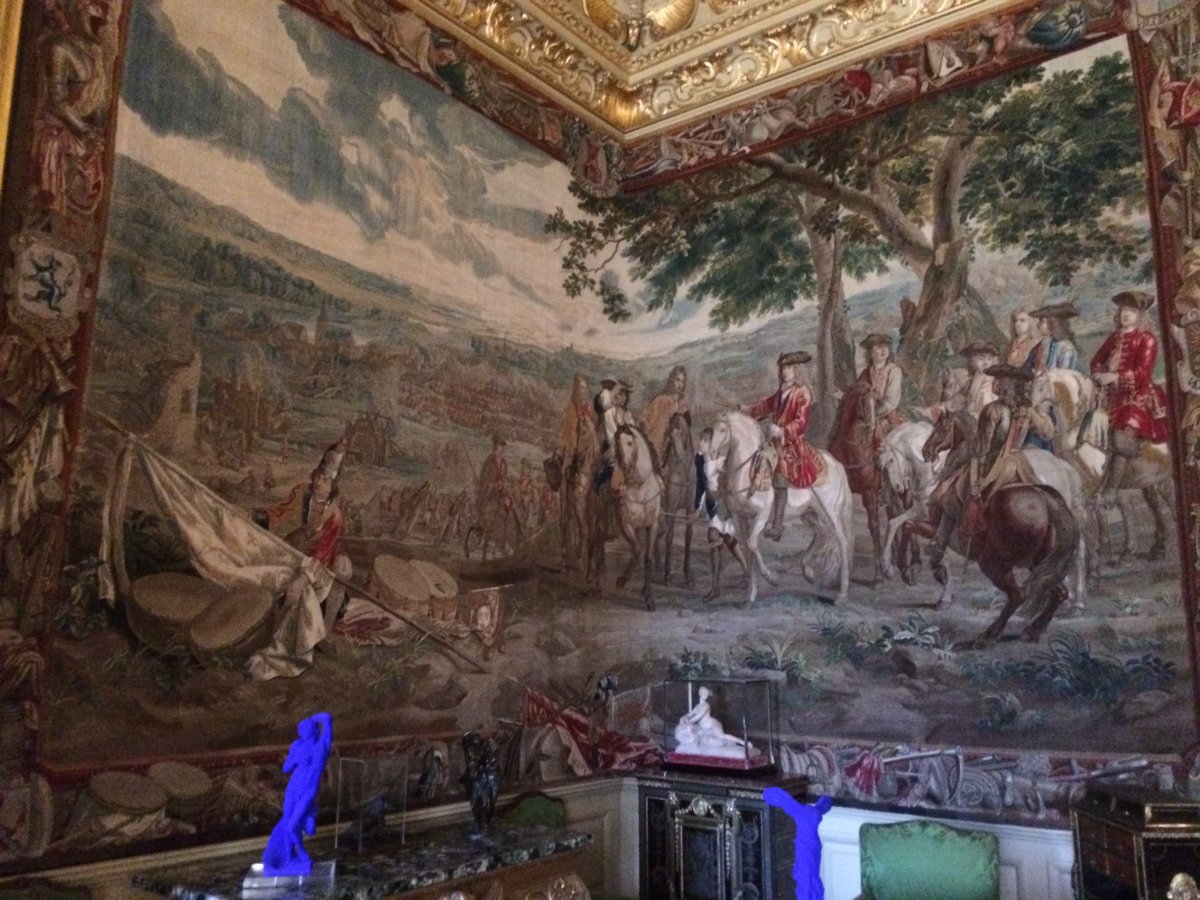 |
|
| The ceiling and walls of this room reminded me of the palaces and chateaus of northern France. |
| |
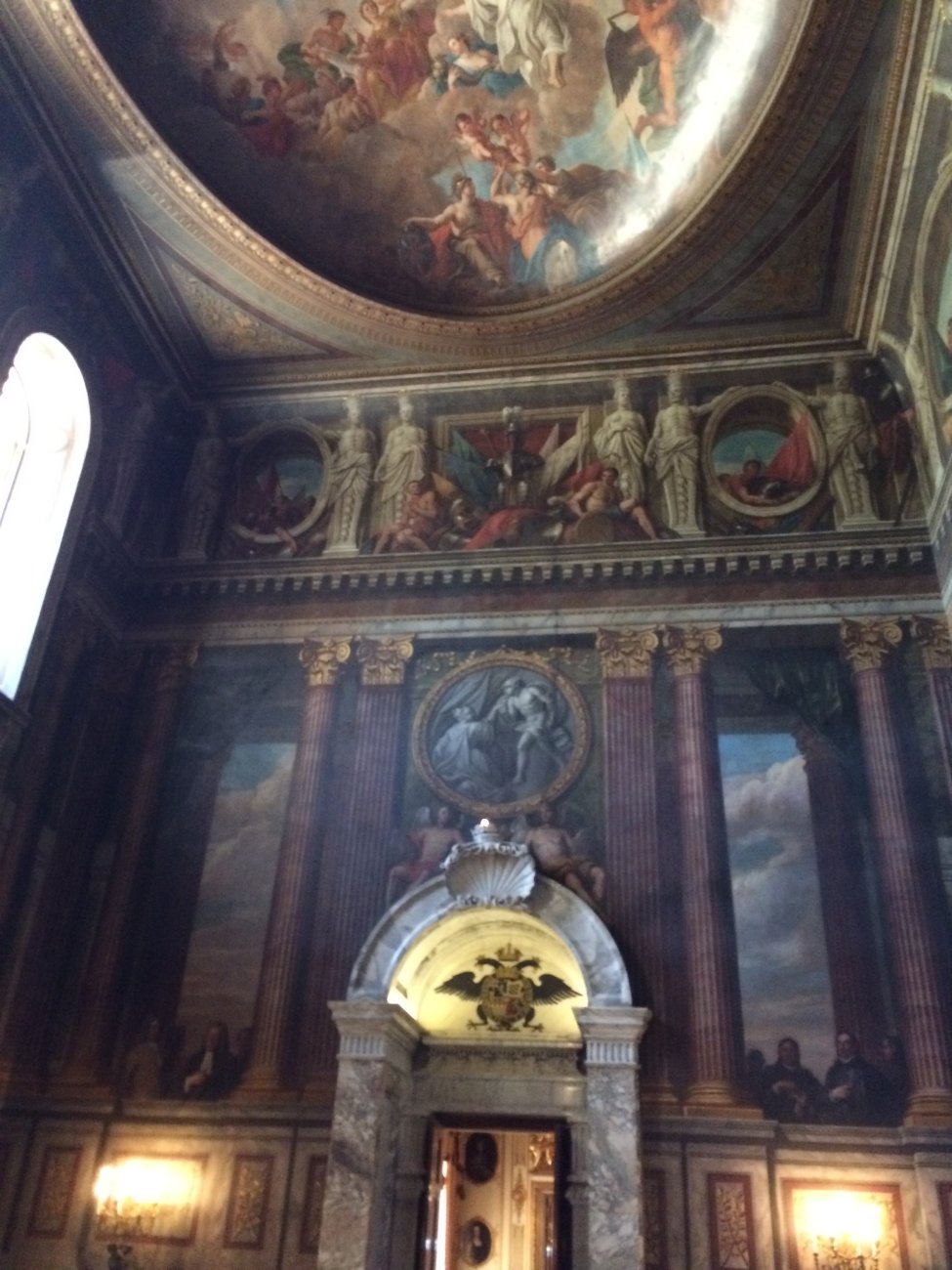 |
|
|
OK, that blue "globe" at lower right. Here is what the placard says: Here we see Yves Klein's experimenting further with IKB Pigment in the round, building up a repository of ultramarine objects to gradually create a blue universe. The globes allude to this notion of a full artistic worldview, and also to invoke Yves Klein's fascination with the cosmos and its infinite vastness -- as depthless as his radiant blue pigment. Yves Klein plays with the texture of his pigment to evoke the appearance of planetary landscapes, imagining the surface and tactility of worlds beyond our reach."
Well, I feel much better for knowing that. Who knew?
|
| |
 |
|
|
The King of France, Louis the XIV, who was the Duke's adversary during the War of Spanish Succession. This portrait is one of several known copies; the original is in the Louvre.
|
| |
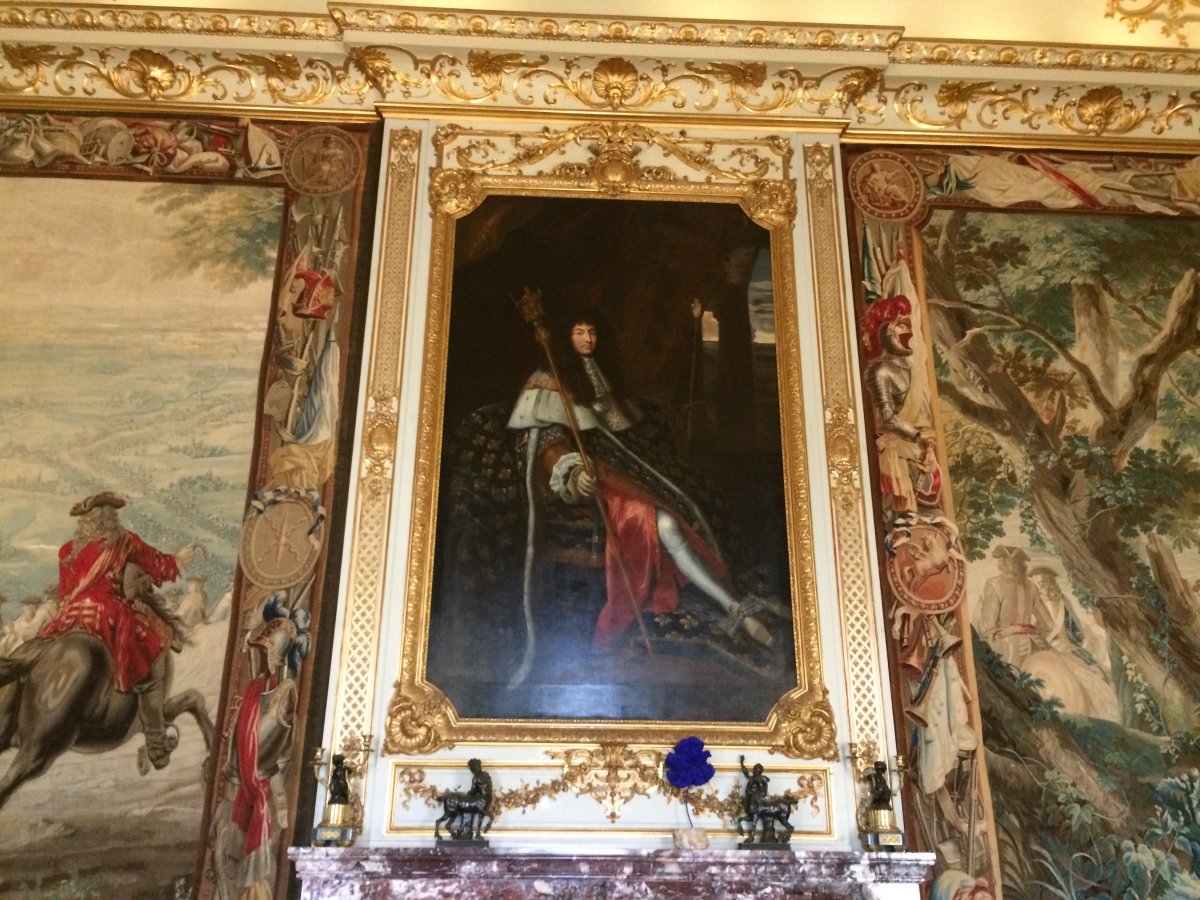 |
|
|
This tapestry in the Second State Room is one of three depicting the final victorious campaign of the 1st Duke of Marlborough at Bouchain.
|
| |
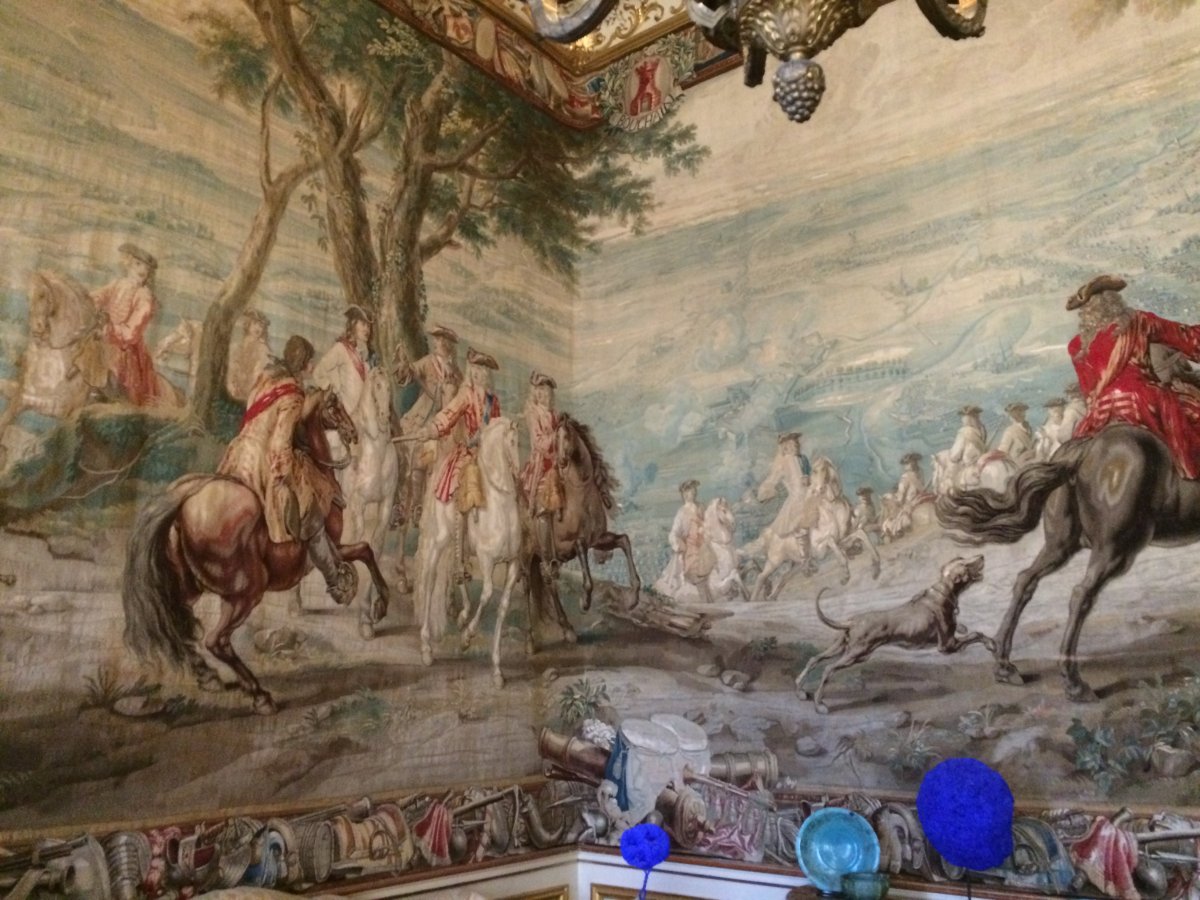 |
|
| The Duke (on the left) with his military engineer Colonel Armstrong. The Duchess thought it a good likeness of her husband and got a good deal on the painting! |
| |
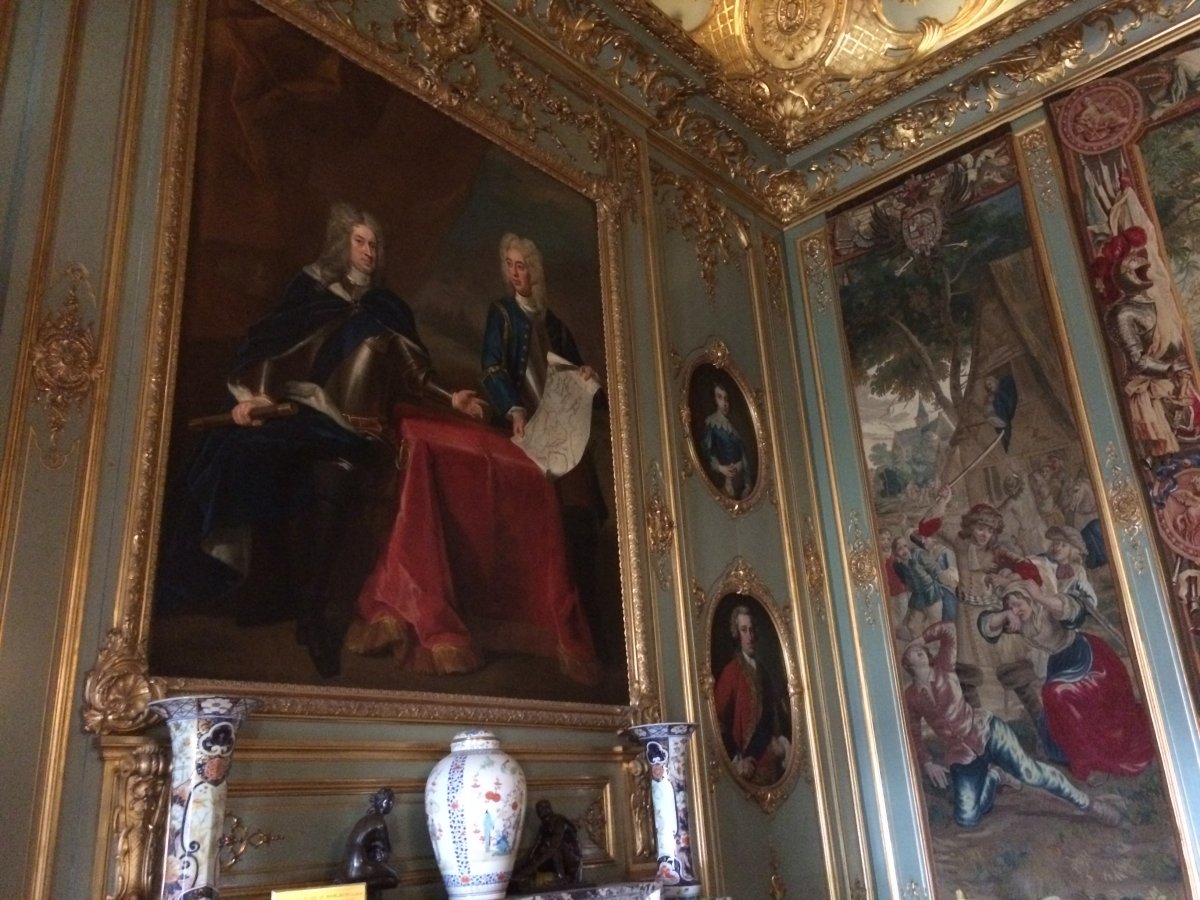 |
|
|
This "art" just seems out of place at Bleinheim Palace.
The Dukes used these State Rooms to impress visiting dignitaries. What is more impressive: the old stuff or the new stuff? You decide.
|
| |
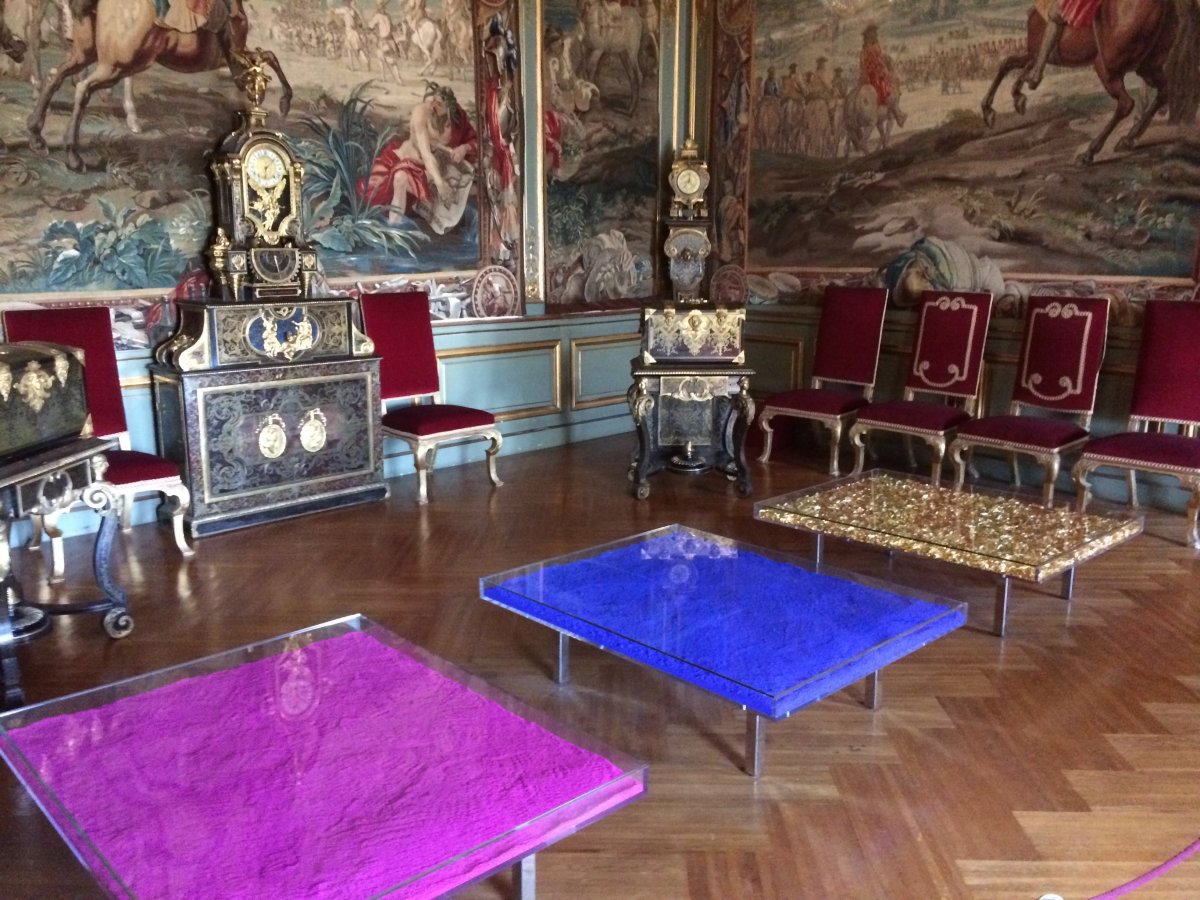 |
|
| Queen Anne gave Marlborough command of her army, made him a Duke, and gave him what became Blenheim Palace after his great victory. |
| |
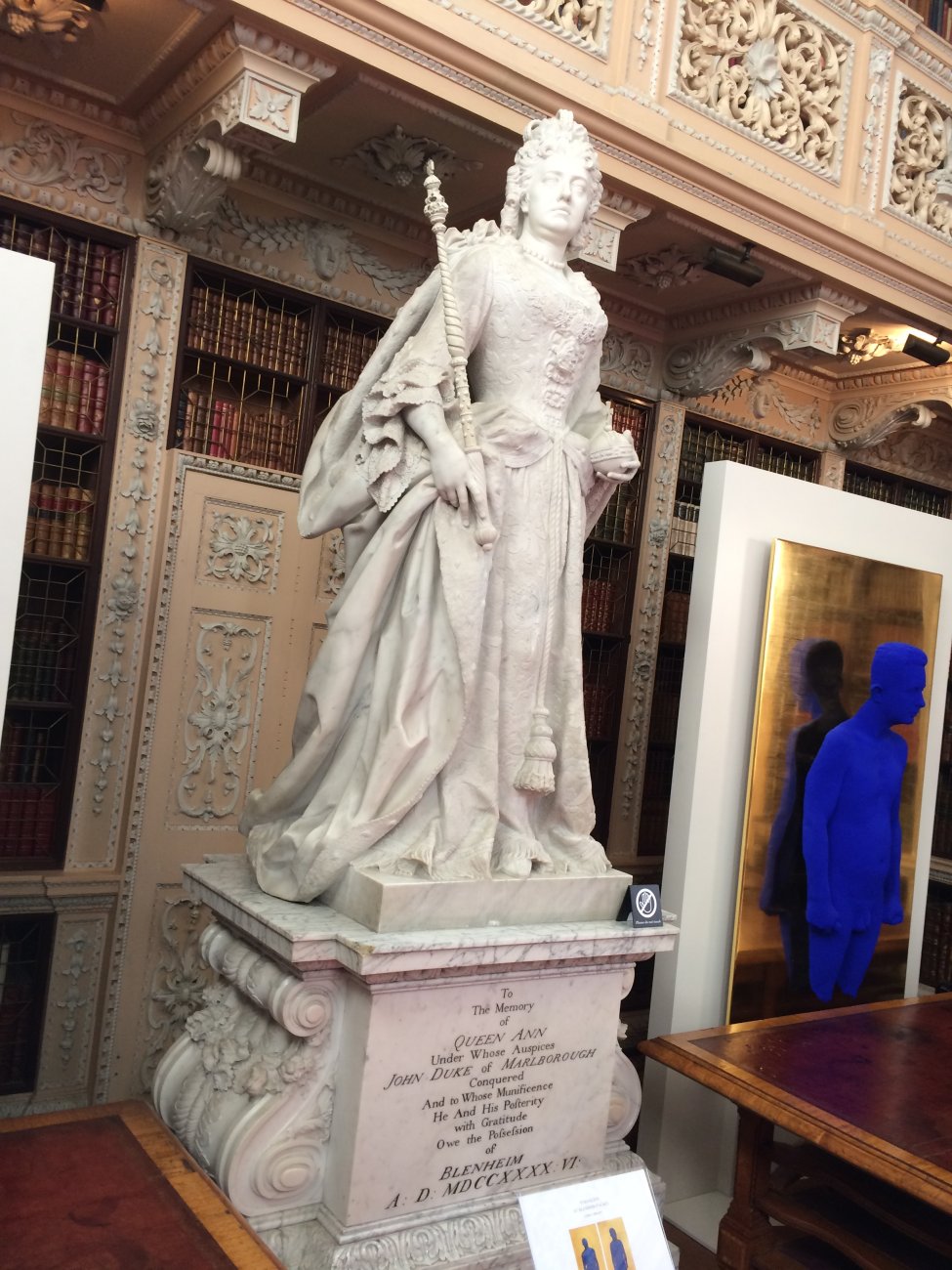 |
|
|
Walking down the magnificent wing hallway called The Long Library.
|
| |
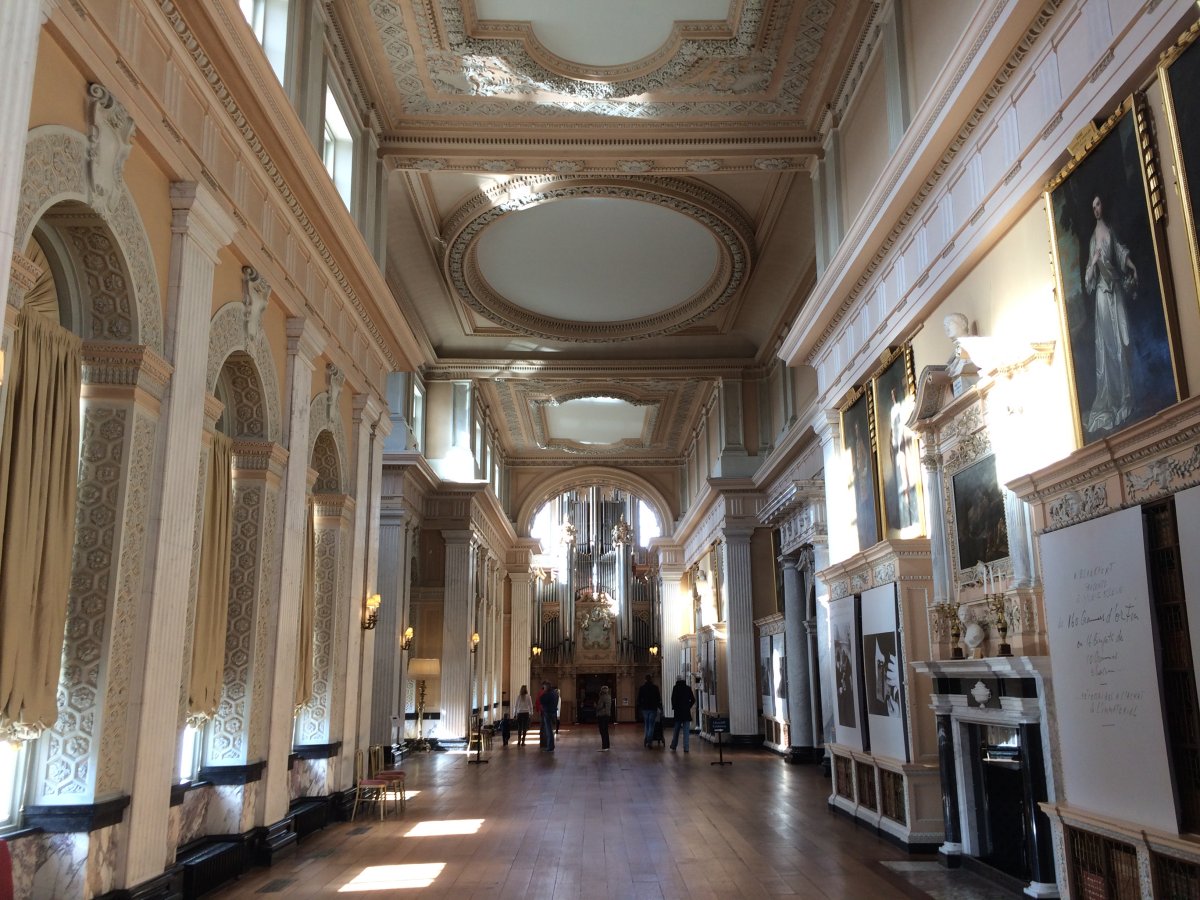 |
|
|
Now in the Chapel, looking at the tomb of John Churchill, 1st Duke of Marlborough.
|
| |
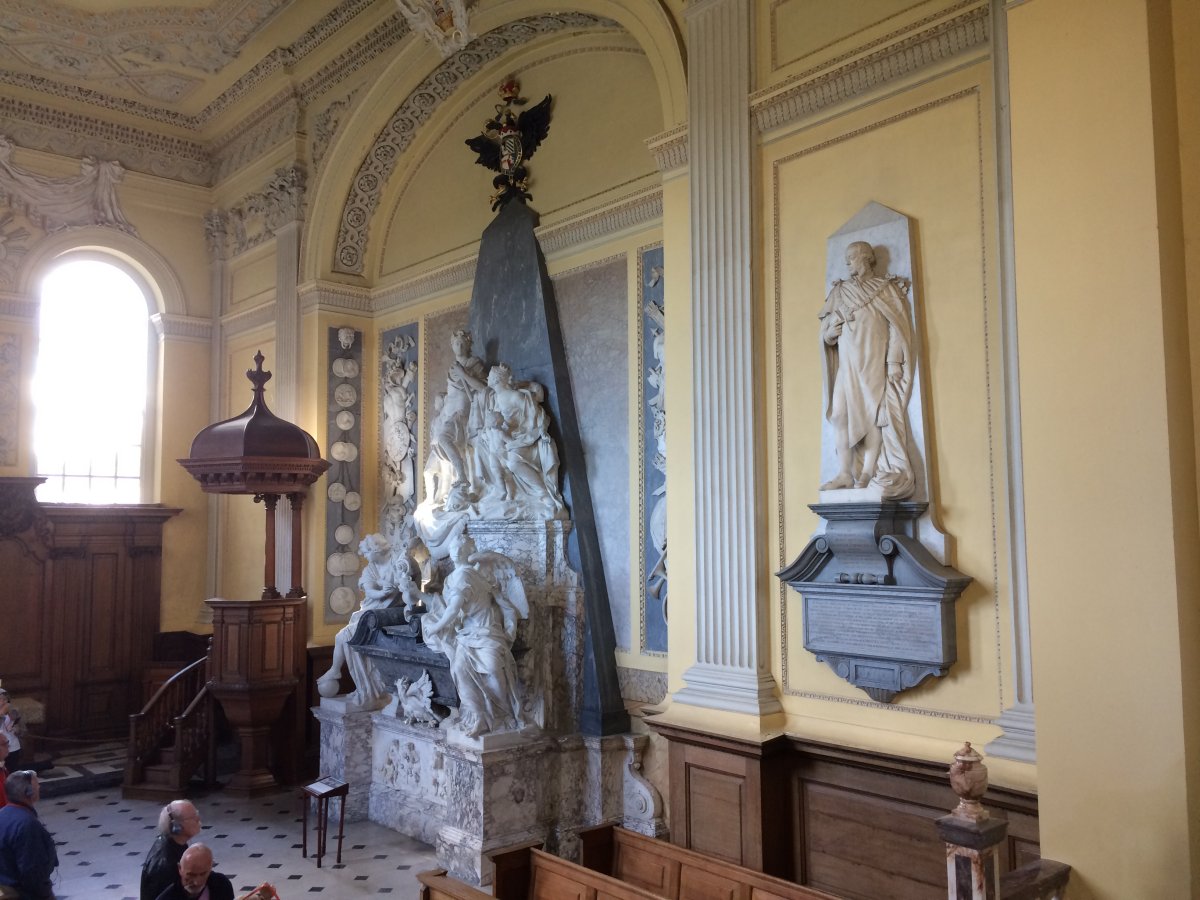 |
|
|
Also in the chapel, a statue of Lord Randolph Churchill, Winston Churchill's father.
After the Chapel, we went on the "private apartments"where, understandably, no picture-taking was allowed. But it was quite interesting. It turns out that it is difficult to put modern amenities in a 300 year palace made of stone. Things like central heating, electricity, bathrooms, internet, cable, etc. So the living quarters are no great shakes. In fact, the Duke of Marlborough's descendents don't even spend much time here. Visiting dignitaries like to spend a night in the private apartment guest rooms just becase of the panache.
|
| |
 |
|
|
A miniture railway goes from the palace to the gardens. It was late in the day and we went on the last run of the day.
|
| |
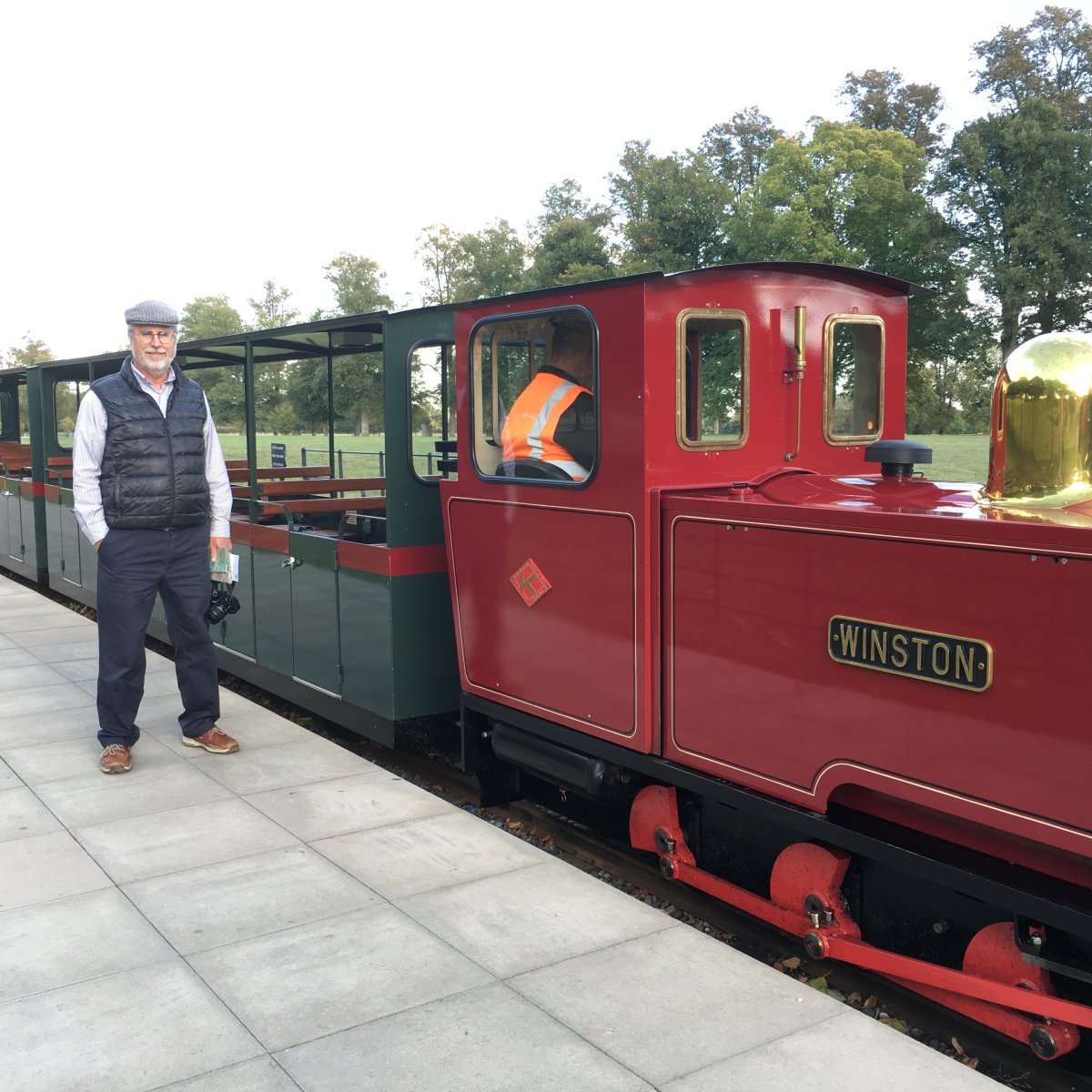 |
|
| Inside the butterfly house at the gardens. |
| |
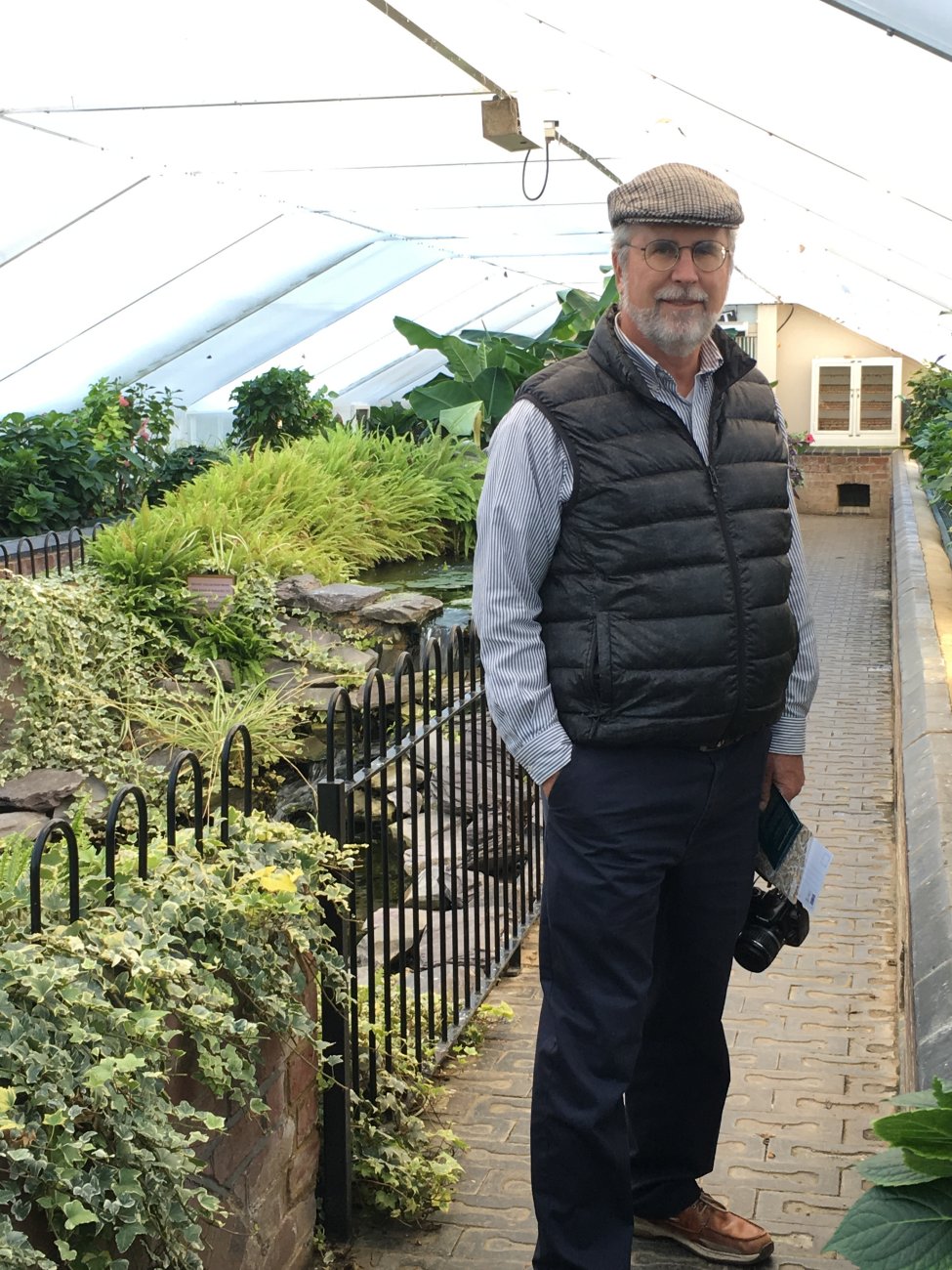 |
|
|
Yeah, there's a butterfly!
|
| |
 |
|
| And another one. There weren't a whole lot of them. The best butterfly farm I've ever been to was at Niagara Falls, of all places. |
| |
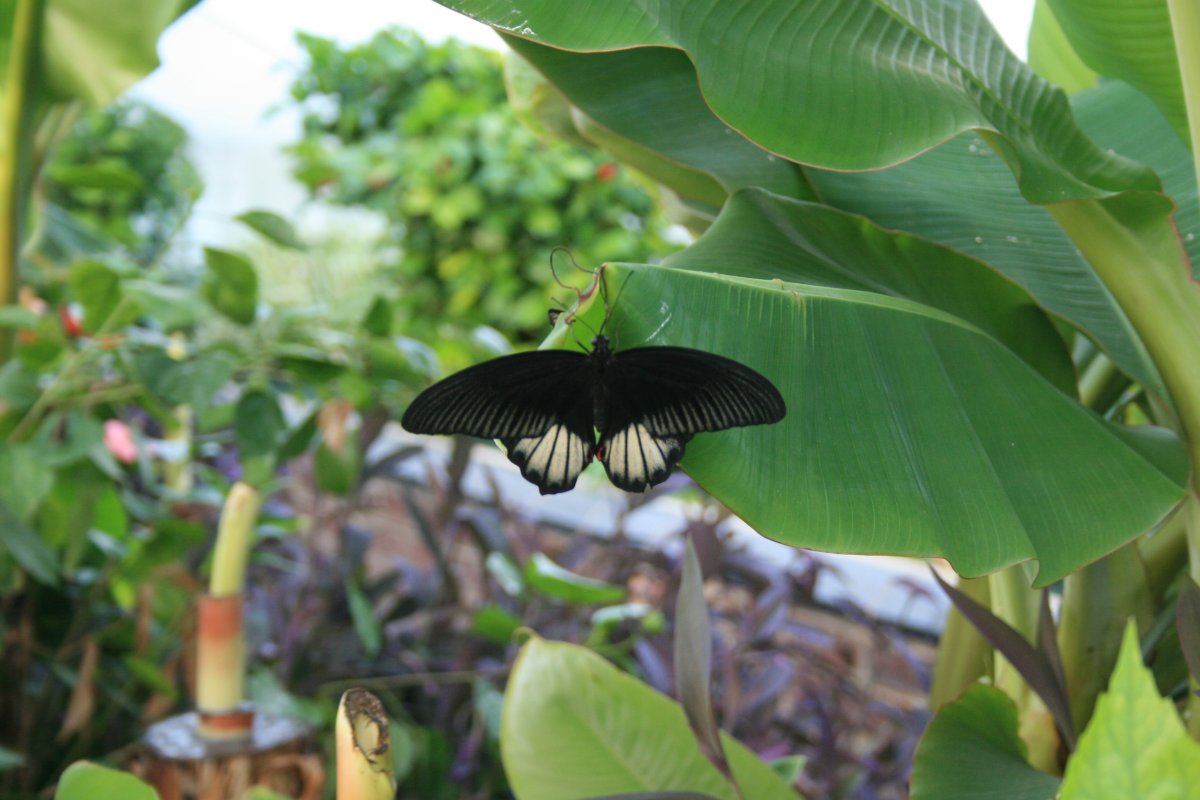 |
|
|
They had birds, too.
Winston Churchill is buried at Blenheim, but the tomb is on the edge of the estate and so we didn't have time to see it. I will agree that Blenheim Palace is definately on the list of "Must See" if you are visiting England.
|
| |
 |
|
| |
| |
| |
|
|
|
|
|
|


























